Caladium
Caladiums are tropical plants known for their stunning, colourful foliage, making them popular for adding a tropical flair to gardens and indoor spaces. With their vibrant leaves and diverse patterns, caladiums can instantly enhance the beauty of any landscape or interior.
Origins and Varieties:
Caladiums belong to the family Araceae and are native to tropical regions of South America, particularly Brazil and the Amazon basin. Various caladium cultivars are available, each featuring unique leaf shapes, patterns, and colours. Popular varieties include White Queen, Red Flash, Pink Beauty, and Candidum.
Leaf Features:
Caladiums are prized for their large, heart-shaped or arrowhead-shaped leaves that come in a wide array of colours, including shades of green, pink, red, white, and combinations of these colours. The leaves often display intricate patterns, such as speckles, veins, or contrasting edges, adding to their visual appeal.
Cultivation and Care:
Caladiums thrive in warm and humid climates, preferring temperatures between 65-85°F (18-29°C). They are typically grown annually in cooler regions or as perennials in warmer regions. Caladiums require well-draining soil rich in organic matter and thrive in partial shade or filtered sunlight. They are generally not frost-tolerant.
Planting and Propagation:
Caladiums can be grown from tubers, which are swollen underground stems. Plant the tubers in the desired location with the eyes facing up, approximately 1-2 inches deep. Maintain adequate spacing between plants to allow for proper growth. Propagation can also be done by dividing tubers or planting seeds, although division is the more common method.
Watering and Moisture:
Caladiums prefer consistently moist but not waterlogged soil. Water the plants regularly, keeping the soil evenly moist during the growing season. Mulching around the plants helps retain moisture and regulate soil temperature. Avoid overwatering, as it can lead to root rot, and be cautious of prolonged dry spells, as they can cause the leaves to wilt.
Fertilization:
Caladiums benefit from regular fertilization during the growing season. Apply a balanced, slow-release fertilizer according to the package instructions or use a liquid fertilizer diluted to half strength. This helps provide essential nutrients for healthy leaf development and vibrant colours.
Pests and Diseases:
Caladiums are relatively resistant to pests and diseases. However, they may occasionally be susceptible to spider mites, aphids, or fungal infections. Regular inspection and prompt treatment with appropriate insecticides or fungicides can help control these issues.
Seasonal Care:
In regions with colder winters, caladiums need special care. As the temperatures drop, the plants will naturally enter dormancy. Lift the tubers before the first frost, clean them, and store them in a cool, dry place. Replant them in the spring when the soil temperature warms up.
Container Gardening:
Caladiums can be grown in containers, making them versatile for patios, balconies, and indoor spaces. Select a container with drainage holes and use a well-draining potting mix. Ensure adequate sunlight and moisture for the plants, and consider rotating them periodically for even growth.
Caladiums are striking plants that bring tropical beauty to any garden or indoor space.
Things to know about Caladium
Common (vernacular) Name
एन्थूरियम (Hindi), Anthurium, Flamingo Lily, Flamingo Flower, Painter's Palette, Lace Leaf, Pigtail Plants, Tail Flower and many more.
Botanical Name
Anthurium Andraeanum
Origin
Mexico to Tropical America (Colombia, Ecuador).
Family
Araceae
Plant Type
Tropical plant
Plant Features
Ornamental / Evergreen / Exotic
Life Cycle
Perennial
Landscape Uses
Container Planting and Houseplants.
Species
Belolonchium, Calomystrium, Cardiolonchium, Chamaerepium, Cordatopunctatum, Dactylophyllium, Decurrentia, Digitinervium, Gymnopodium, Leptanthurium, Pachyneurium, Polyphyllium, Polyneurium, Porphyrochitonium, Schizoplacium, Semaeophyllium, Tetraspermium, Urospadix, Xialophyllium.
Varieties
It comes with thousand of different varieties in a diversity of leaf and flower colorations.
Size
Height : 1 to 1.5 feet tall and Width : 1 feet wide when mature.
Indoors or Outdoors
Outdoors : Anthurium can be used outdoors in shady plantings, avoid direct sun light.
Indoors : Excellent plant grow in bright light or indirect light. Best indoor plants for beginners.
Blooming / Flowering
Blooming period is throughout the year.
Flower Colour
It’s come with a contrasting spadix Gold, Yellow, Orange, Pink, White, Green, Purple, Red, Burgundy, Multicolored and Variegated colours.
Lucky Plant
According to Feng Shui, It bring Good Luck in your relationships.
Lighting / Sun Exposure
Bright Indirect Sunlight.
Temperature
Grow best preferably warm temperature above 21°C and can be tolerate max temp. as high as 32°C.
Growth Rate
Anthurium is a slow to moderate growers plant.
Watering
Moderate watering, Mist or over head sprinkler to provide water and to improve relative humidity. Not tolerate overwatering it may cause root damage and yellowing of the leaves.
Fertilizer
Slow-release fertilizer, or a water-soluble liquid fertilizer once or twice in the growing season (Spring through Summer).
i.e. - Cow dung, DAP, Compost, NPK 30-10-10 fertilizer, liquid organic fertilizer etc.
Pruning
Pruning of Anthurium not much is needed. However, trimming away only discolored or dead leaves.
Propagation
Seeds : The best time to sow your Anthurium seeds is in the end of Winter / early Spring but it can't can give good result.
Stem Cuttings : The easier methods of propagation of Anthurium in water or in soil via stem cuttings, and can be done during the warm growing season.
Division : Division of Anthurium can be done in Rainy season, or better in February to March.
Dormancy Period
Month : November to February (winter season)
Shed their leaves and show poor growth, Watering minimally.
Avoid : Propagate, Fertilize and Repotting.
Container
Ceramic Pot, Plastic Pot, Terracotta or Clay Pot is preferred, which ensures good drainage as well as water holding capacity.
Soil Type
A well-drained Loam / Coarse potting soil is recommended as well as water holding capacity. Prevent soggy potting medium.
Our recommendation for potting mix : Equal part mixture of Garden Soil (25%) + Compost (25%) + River Sand (25%) + Cocopeat (25%). You can substitute pieces of Charcoal, Vermicompost, Perlite etc.
Soil pH
Lightly Acidic soil - Ideally 5.5 to 6.5 pH (potential of hydrogen) is recommended for Anthurium.
Repotting
It is advisable to repot the Anthurium every year or two preferably spring to midsummer season.
Maintenance
Low maintenance and easy to grow.
Properties
Toxic or Poisonous to both humans and pets upon ingestion.
Benefits
Excellent indoor air purifier, Anthurium plants turns CO2 into oxygen. It purifies indoor air by removing harmful chemicals like ammonia, toluene, xylene and formaldehyde.
Special Features
Doesn't attract hummingbirds and pollinators like butterflies and bees or wasps.
Infestation / Pests
Aphids, Scale insects, Thrips, Mealy bugs, Spider mites and caterpillars etc.
Diseases / Problem
Physiological Problem : Anthracnose, Leaf Spot and Powdery Mildew.
Bacterial Problem : Bacterial Blight, Bacterial Wilt and Black Nose Disease.
Fungal Problems : Root Rot and Water Mold.
Some Glimpse of Caladium
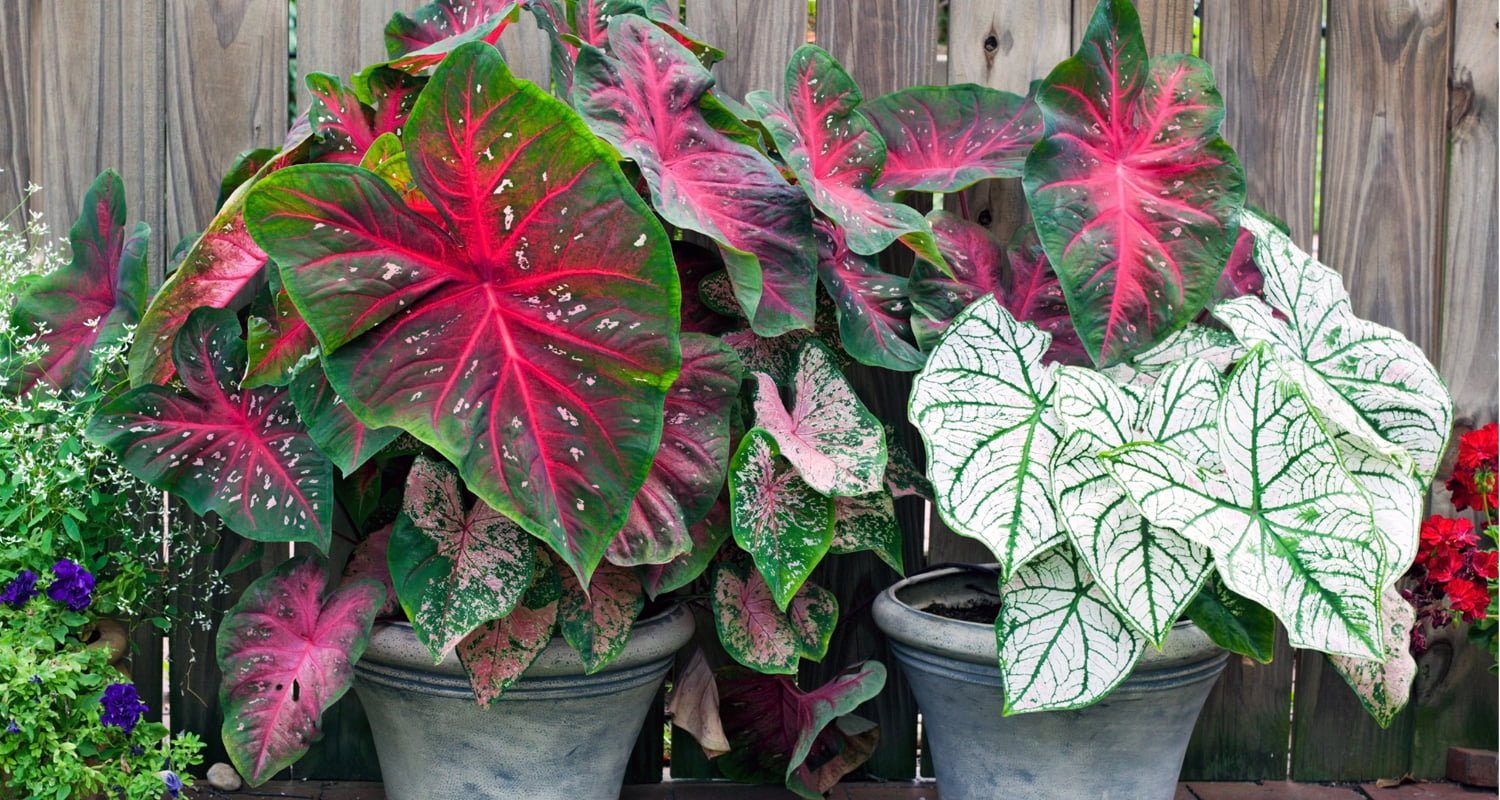
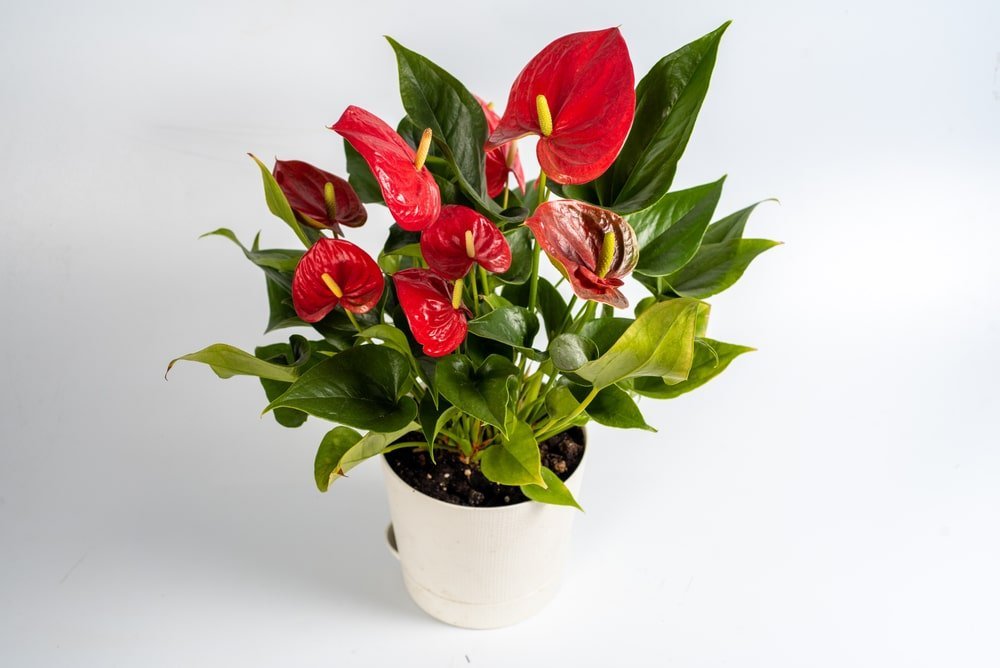
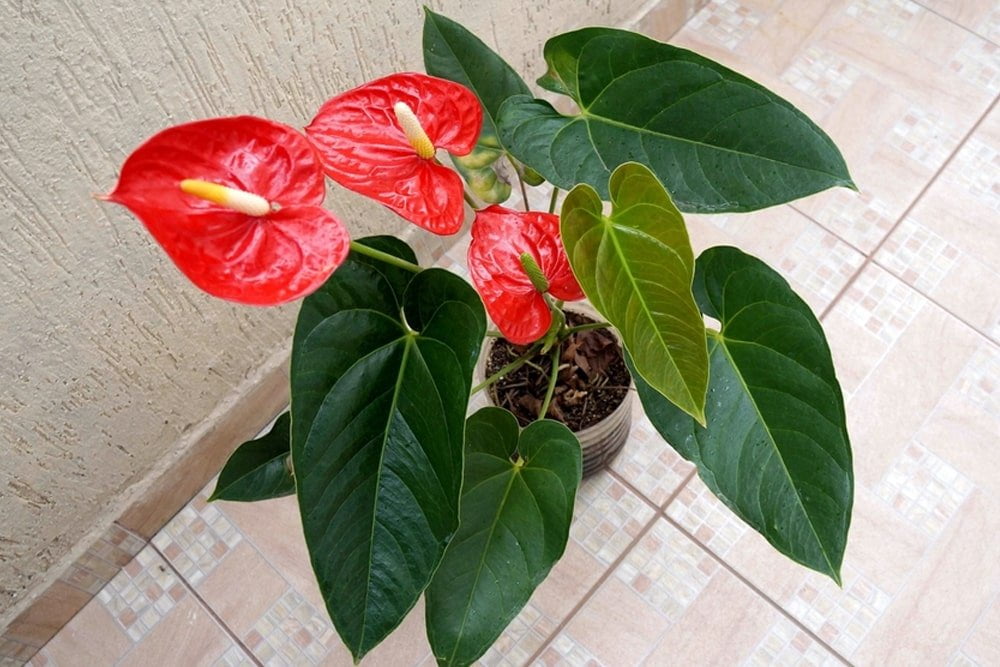


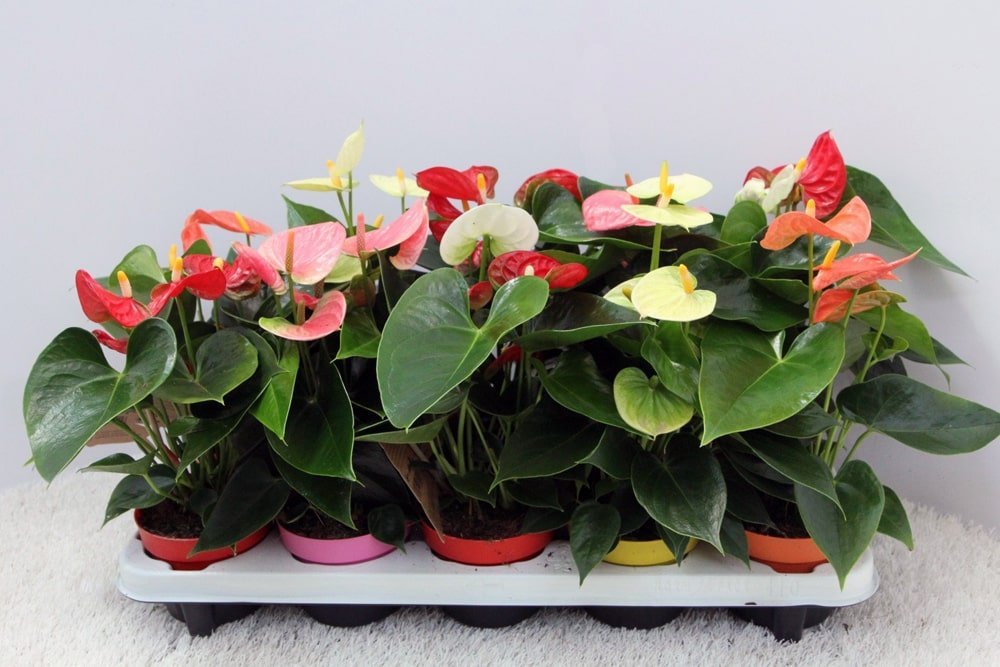


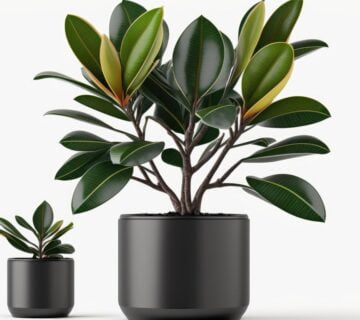
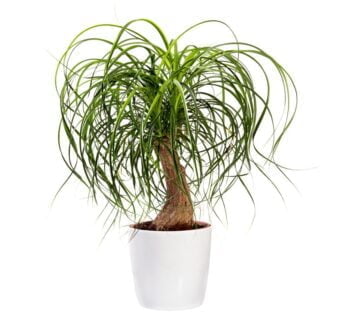
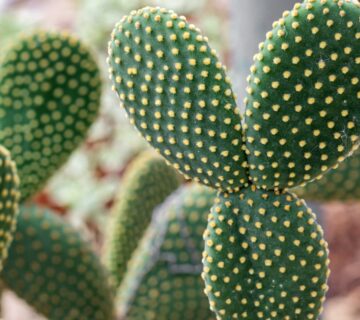
No comment